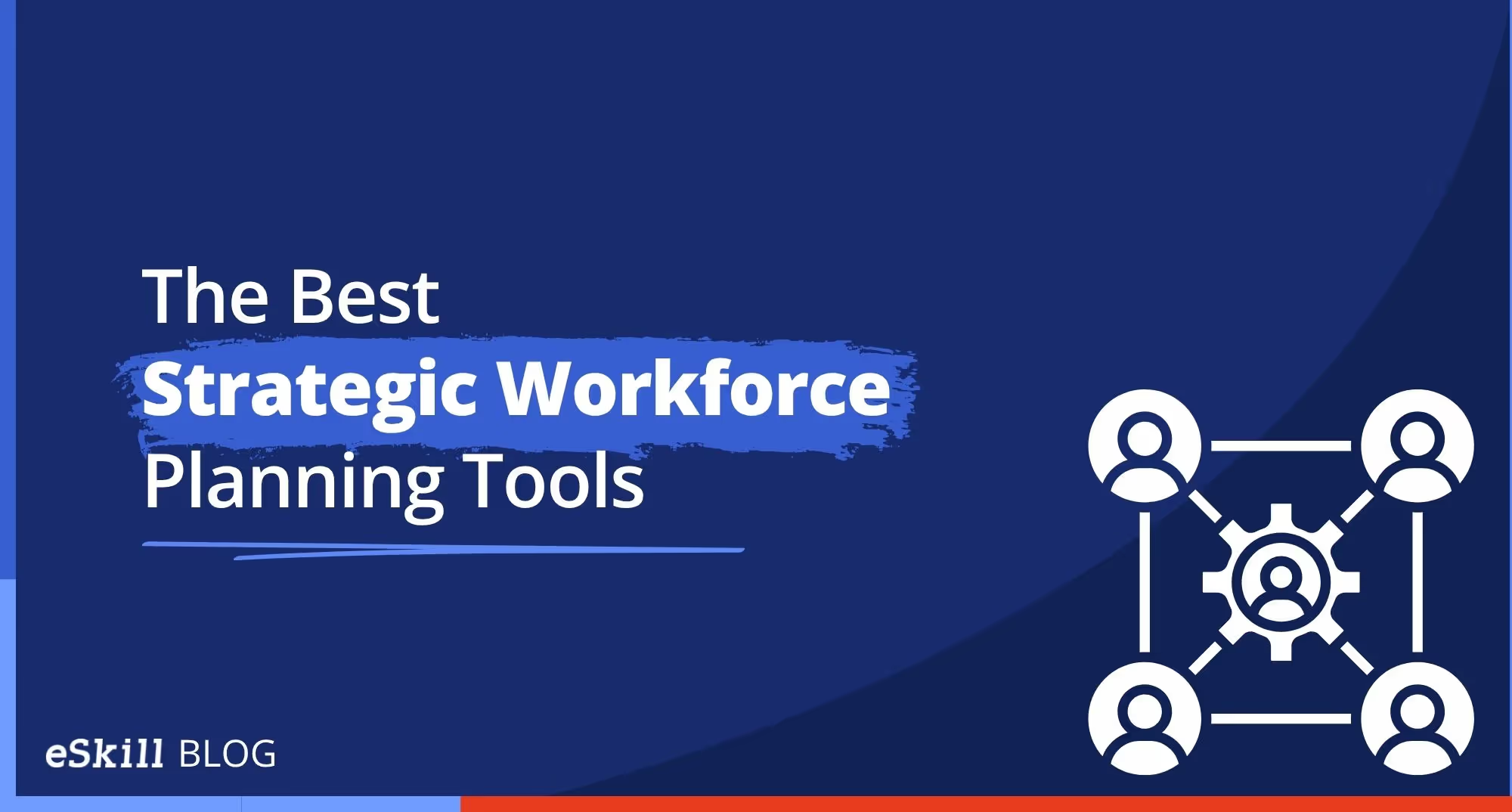Effective strategic workforce planning enables organizations to anticipate and meet future talent needs. Since disruption and change are the norm, strategic workforce planning tools provide data-driven insights to optimize an organization’s most valuable asset—its people. Here are some top strategic workforce planning tools HR leaders rely on:
What Are Strategic Workforce Planning Tools?
Strategic workforce planning tools help you analyze the abilities of your workforce and determine future staffing needs. They are designed to add a data-focused mindset to your people-planning programs like hiring, training, and performance.
Organizations use strategic workforce planning tools to ensure their work is being done by the right people and that they can meet all of their goals on time. The purpose of strategic workforce planning tools is to streamline employee management, remove guesswork, and optimize staffing operations as much as possible. They help employers answer questions like “How many people should we have working on this project?” or “Which client do we want this project manager to work on next?” The tools use established formulas for various scenarios to provide the data to determine the answers.
Examples of Strategic Workforce Planning Tools
Strategic workforce planning helps HR teams identify talent needs to support overall goals and establish a strategy to ensure your company benefits from the right combination of talent, technologies, and employment models to reach those goals. Here are examples of commonly used strategic workforce planning tools:
HR Information Systems
HR information systems integrate employee data into a single platform to enable strategic analysis. They can collect key workforce metrics such as skills/competencies, performance data, compensation, training history, and demographics. Many provide specialized modules to model workforce scenarios and demands.
Skills Gap Analysis
By understanding skills gaps, organizations can upskill selectively. Skills gap analysis tools use internal and external data points to build a skills inventory. Surveys, assessments, and labor market analyses highlight hiring, training, and reskilling priority areas.
Workforce Forecasting
Analytics tools forecast workforce supply and demand using factors like performance, retention rates, and business growth projections. Many platforms allow modeling that enables business leaders to anticipate a talent surplus or deficiency.
Employee Engagement Surveys
Employee engagement surveys provide insights into employee perceptions, goals, and satisfaction. The findings provide the information needed to assist in formulating strategic plans that enhance retention and improve recruitment and workplace culture.
Talent Acquisition Tools
Recruiting tools are essential to hire talent needed immediately and for the future. Applicant tracking systems facilitate strong pipeline management, and hiring analytics provide insights that refine sourcing and hiring practices.
Learning Management Systems
Identifying skills gaps is the first step, and upskilling and reskilling is next. Learning management systems help HR leaders develop personalized training programs to grow strategic capabilities.
Workforce Cost Modeling
Financial analysis of workforce initiatives is key for making data-driven decisions. Most strategic workforce planning tools of this type assess the ROI of upskilling, hiring, and transition programs.
Dashboard Reporting
Interactive strategic workforce planning dashboards enable real-time workforce analytics. HR leaders can monitor progress on strategic initiatives and adjust them as needed.
Essential Strategic Workforce Planning Tools
Using strategic workforce planning tools, companies can analyze current staff capabilities and future needs, helping to identify the gap between the current workforce capabilities and your future needs. In addition, they help you find ways to fill this gap. These are five essential strategic workforce planning tools.
Strategic Workforce Planning Map
A workforce map shows how your workforce planning activities are aligned with the bigger picture, like your organizational strategy.
Performance Potential Matrix
A performance-potential matrix, also called a 9-Box Grid or HR3P matrix, maps employees’ performance and potential in one model ranging from “talent risk,” which are low potential and low-performance employees, to “consistent stars,” who are high potential and high-performance employees.
HR Dashboarding
An HR dashboard shows current workforce capabilities from different sources, like payroll programs, applicant tracking systems (ATS), and other Human Resources Information Systems. Metrics are calculated and displayed using the data provided.
Compensation and Benefits Analysis
A compensation and benefits analysis sets an internal pay benchmark and groups people in (severely) overpaid and (severely) underpaid categories to ensure you are rewarding top performers.
Scenario Planning
Scenario planning helps businesses anticipate multiple possible futures so they will not be caught off-guard. It includes incidents that could have a severe impact on your business and that you will be unlikely to see coming, such as technological innovations, new legislation, natural disasters, and changes in public opinion.
Get Started with Strategic Workforce Planning Tools
Relying on a single strategic workforce planning tool creates blind spots. Implementing a suite of integrated HR analytics, planning, and talent management systems provides the comprehensive data organizations need for robust strategic workforce planning.
Investing in leading tools empowers HR leaders to build adaptive, future-ready workforces.
With the right technology, organizations can optimize their workforce strategy and investments. As disruption accelerates, data-driven workforce planning is mission-critical for success.
Are you ready to learn how implementing the right set of strategic workforce planning tools can help you maximize resources and future-proof your workforce? Contact us to request a demo.

Latest blog posts
Get ademo.




